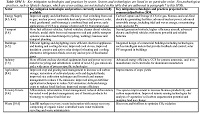I don’t know about you but when I came out of the Al Gore movie what depressed me more than the state of the planet was not having a clue what I could do about it. It was like a dire doctor’s message on a voicemail that got cut off: “The bad news is you have cancer. The good news is…” Click.
Then, back in February, came more bad news—the first installment of the report of the Intergovernmental Panel on Climate Change (the IPCC, an international body whose job is explained here). The report (summarized here) concluded with 90% certainty that most of the increased temperature of the planet over the last 50 years has been caused by human-activity-related greenhouse gases. Like a second message from the doctor: “Oh and by the way, that cancer you have? It’s your own fault.”
As if the first installment wasn’t enough to make you feel the IPCC was working with Eli Lilly to drive you to Prozac, they sent another tome of bad news our way with the second installment of their report, out in April (summarized here). It said global warming was sure to cause more droughts, more wildfires, more floods, more hurricanes, more tornados, more disease, and on and on.
But at last, on May 4, the IPCC issued the main points of its third installment , the one I have been waiting for, the one with the power to talk me down from the ledge. This one is about—at last—not the disease but the cure. It tells us what we can do to fix the problems. I’m relieved, even if the cure consists of a lot of, as Grist wrote, “bad-good” news.
We need to cut greenhouse gasses by 50 to 85 percent by 2050, says the IPCC final installment. We need to do this to keep global-warming induced temperature increases below 2˚C, or the Greenland ice sheet and polar caps will begin to melt irreversibly. Goodish news is that these measures will cost no more than three percent of the world’s gross domestic product.
Of particular interest to me, as Scientific American reports,
“The panel…said for the first time that lifestyle changes could help fight global warming. It gave no examples, but IPCC chairman Rajendra Pachauri said his personal suggestions included turning down the thermostat and eating less red meat, which could cut animal methane emissions. ‘These are lifestyle measures but you are not going to give up anything and you might gain,’ he told a news conference.”
Since the No Impact project concentrates specifically on individual action, the fact that the IPCC mentioned individual lifestyle changes as potentially important is gratifying. Over and over, people have told me that individuals can’t make a difference. The IPCC begs to differ!
For that reason, and because I expect oodles of visitors to be joining us after the Good Morning America and Nightline segments about No Impact Man that will air tomorrow, Thursday, May 10, my next two posts will be about things individuals can do to help reduce greenhouse gas emissions.
Meanwhile, I’ll leave with you a quick summary of the key technologies the IPCC believes will help us mitigate our carbon emissions in the coming decades (click the table to see a larger version):
